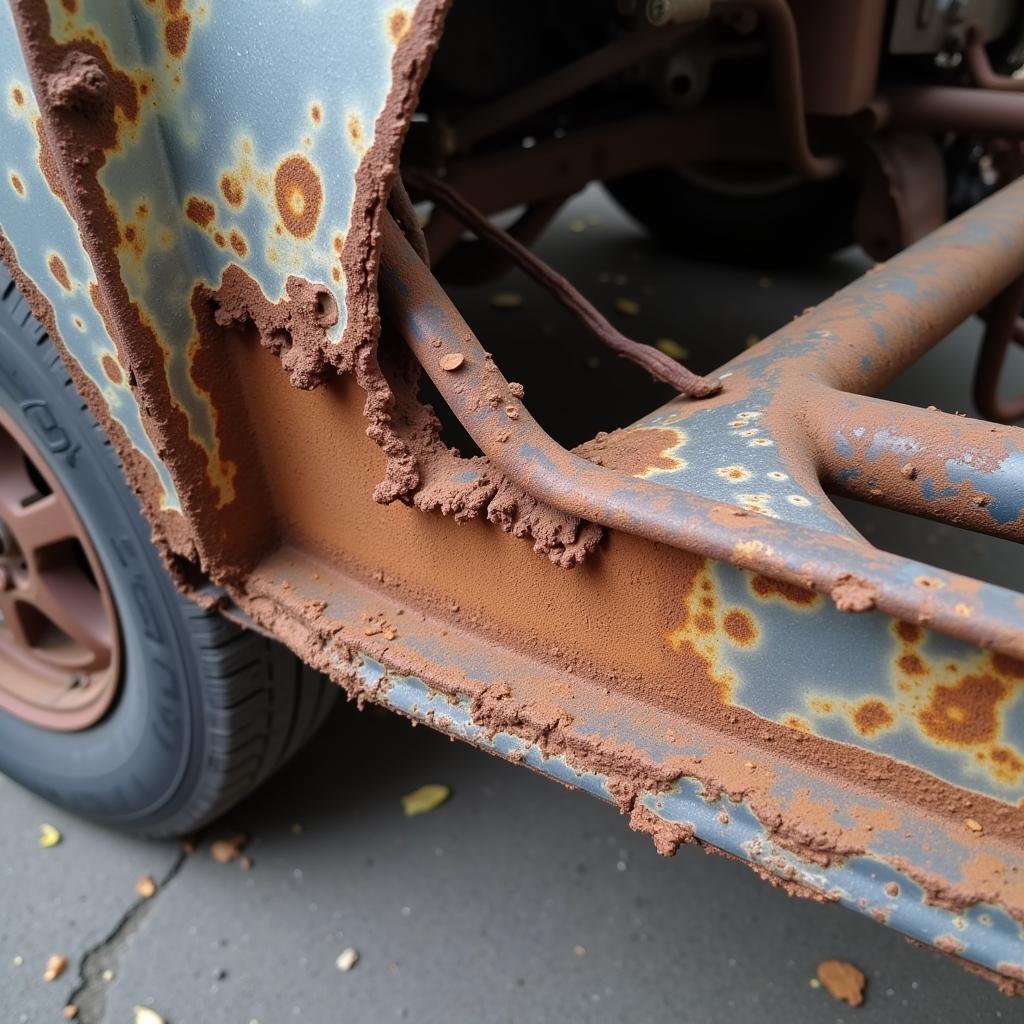If your car is misfiring after a timing belt replacement, you’re not alone. This is a common issue, and understanding why it happens is crucial to getting your car back on the road. This article will delve into the reasons why a replaced timing belt can lead to misfires, provide troubleshooting tips, and guide you on the best course of action.
Understanding the Timing Belt’s Role
The timing belt is a vital component of your engine, responsible for synchronizing the crankshaft and camshaft rotations. This precise timing ensures that the engine’s valves open and close at the correct moments, allowing for proper fuel and air intake and exhaust expulsion. When a timing belt breaks or is incorrectly installed, this synchronization is disrupted, leading to a range of problems, including misfires.
Common Causes of Misfires After a Timing Belt Replacement
Incorrect Timing Belt Installation
The most frequent culprit for misfires after a timing belt change is improper installation. Even being off by a single tooth can throw off the engine’s timing and cause misfires. This highlights the importance of precise alignment during the installation process.
Damaged Sensors
Sometimes, during the timing belt replacement process, sensors crucial for engine operation, such as the crankshaft position sensor or camshaft position sensor, can be inadvertently damaged or disconnected. These sensors provide vital information to the engine control unit (ECU), and a malfunctioning sensor can cause misfires.
Vacuum Leaks
Another potential issue is the creation of vacuum leaks during the repair. Hoses or connections might be accidentally loosened or damaged, disrupting the engine’s air-fuel mixture and leading to misfires.
Troubleshooting Misfires
Check the Timing Belt Alignment
First and foremost, double-check the timing belt alignment. Verify that all timing marks on the crankshaft and camshaft sprockets align perfectly with the designated marks on the engine block. This often requires specialized tools and knowledge, so consulting a qualified mechanic is recommended.
Inspect Sensors and Connections
Carefully inspect all sensors and connectors related to the engine’s timing and fuel delivery system. Look for any loose connections, damaged wires, or signs of damage to the sensors themselves. Reconnect any loose connections and replace any damaged components.
Test for Vacuum Leaks
Use a vacuum gauge or a simple carburetor cleaner spray to check for vacuum leaks. Spray the cleaner around potential leak points, such as hoses and connections. A change in engine idle speed indicates a leak.
What to Do If Your Car Is Still Misfiring
If you’ve checked these common causes and your car is still misfiring, it’s crucial to seek professional help. Continuing to drive with a misfiring engine can cause further damage and lead to costly repairs.
“A misfiring engine is a serious issue that shouldn’t be ignored,” says John Miller, a seasoned automotive engineer with over 20 years of experience. “Ignoring a misfire can damage catalytic converters and other critical engine components.”
Fixed Thrown Timing Belt Now Car Is Misfiring: Professional Help
A qualified mechanic has the expertise and tools to diagnose the root cause of the misfire accurately. They can perform more advanced diagnostics, such as compression tests and cylinder leak-down tests, to pinpoint the issue.
“Proper diagnostic tools are essential for identifying the exact cause of a misfire,” adds Sarah Johnson, a certified master technician. “Guesswork can lead to unnecessary repairs and wasted time.”
Conclusion
A misfiring car after a timing belt replacement can be a frustrating experience. However, by understanding the potential causes and taking the appropriate troubleshooting steps, you can get your car back on the road. Remember, if you’re unsure about any aspect of the repair or diagnosis, it’s always best to consult a qualified mechanic. Don’t hesitate to reach out to AutoTipPro for expert assistance. Contact us at +1 (641) 206-8880 or visit our office at 500 N St Mary’s St, San Antonio, TX 78205, United States.
FAQ
-
Can a loose timing belt cause a misfire? Yes, a loose timing belt can disrupt the engine’s timing and cause misfires.
-
How much does it cost to fix a misfire after a timing belt change? The cost depends on the underlying cause. It could range from a simple sensor replacement to more extensive engine repairs.
-
Can I drive my car with a misfire? It’s not recommended. Driving with a misfire can cause further damage to your engine.
-
How can I prevent misfires after a timing belt replacement? Ensure the timing belt is installed correctly by a qualified mechanic.
-
What are the symptoms of a misfiring engine? Symptoms can include rough idling, loss of power, decreased fuel efficiency, and the illumination of the check engine light.
-
Is a timing belt the same as a serpentine belt? No, the timing belt controls the engine’s internal timing, while the serpentine belt drives external accessories like the alternator and power steering pump.
-
How often should I replace my timing belt? Consult your car’s owner’s manual for the recommended replacement interval.





Leave a Reply